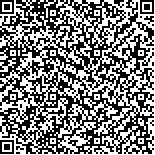本文已被:浏览 309次 下载 20次
Received:October 21, 2024 Published Online:June 20, 2025
Received:October 21, 2024 Published Online:June 20, 2025
中文摘要: 目的 观察星状神经节阻滞(SGB)对维持性血液透析患者的不宁腿症状和睡眠质量的影响。方法 采用随机对照研究方法,选取2022年2月至2024年4月就诊于山西白求恩医院接受规律血液透析合并不宁腿综合征(RLS)的终末期肾病患者62例,随机分为SGB组(S组)和安慰剂对照组(C组),最终纳入57例患者,其中S组29例,C组28例。S组接受连续4次SGB,C组接受连续4次生理盐水注射至同节段颈椎横突前结节前外侧肌肉组织中,均双侧交替进行,1周内(隔日)完成4次注射。分别于治疗前和治疗后4、8、12周记录国际不宁腿综合征研究小组评分量表(IRLS)评分和匹兹堡睡眠质量指数(PSQI)评分,于治疗后12周记录临床总体印象改善量表(CGI?I)评分,评估显效率,并记录不良反应。结果 治疗前,两组患者IRLS评分和PSQI评分差异无统计学意义(P>0.05);治疗后4、8、12周,S组患者IRLS评分和PSQI评分均低于治疗前,且治疗后同时间段S组均低于C组,差异有统计学意义(P<0.01)。治疗后12周评估结果示,S组CGI?I显效率(75.86%)显著高于C组的10.71%(χ2=24.560,P<0.01)。两组均未出现穿刺部位感染、血肿、神经损伤、局麻药中毒等不良反应。结论 SGB可改善尿毒症患者的不宁腿症状,从而改善其睡眠质量,具有较好的临床疗效及较高的安全性。
Abstract:Objective To observe the effect of stellate ganglion block(SGB)on restless legs syndrome(RLS)and sleep quality in hemodialysis patients. Methods A total of 62 patients with end-stage renal disease complicated with RLS who received regular hemodialysis in Shanxi Bethune Hospital from February 2022 to April 2024 were randomly divided into SGB group(group S)and placebo control group(group C), and finally 57 patients were included, 29 in group S and 28in group C. Group S received four consecutive SGBs, while group C received 4 consecutive injections of normal saline into the anterolateral muscle tissue of the anterior tubercle of the transverse process at the same level cervical vertebra, all of which were alternately performed bilaterally, and 4 injections were completed within 1 week(every other day). The International RLS Study Group Rating Scale(IRLS)score and the Pittsburgh Sleep Quality Index(PSQI)score were recorded before treatment, 4, 8 and 12 weeks after treatment, respectively, and the Clinical Global Impression ?Improvement Scale(CGI-I)score was recorded 12 weeks after treatment to evaluate the apparent efficiency and record adverse reactions. Results There was no significant difference in IRLS scores and PSQI scores between the two groups before treatment(P>0.05). At 4, 8 and 12 weeks after treatment, the IRLS scores and PSQI scores of group S were lower than those before treatment, and were also lower than those in group C during the same period, with statistically significant difference(P<0.01). At 12 weeks after treatment, the response rate of CGI-I in group S was significantly higher than that in group C(75.86% vs 10.71%, χ2=24.560, P<0.01). There were no adverse reactions such as puncture site infection, hematoma, nerve injury, and local anesthetic poisoning in the two groups. Conclusion SGB can improve RLS and the sleep quality of uremic patients with good clinical efficacy and high safety.
文章编号: 中图分类号:R614.4 文献标志码:A
基金项目:
引用文本:
